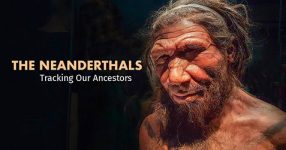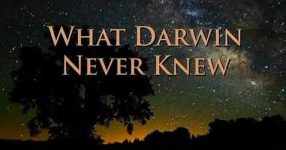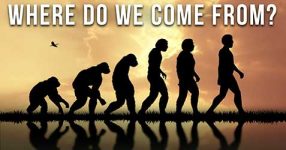In the realm of evolutionary exploration, “The First Human” stands as a captivating documentary that unravels the mysteries behind the evolution of bipedalism in our species. Directed by Ben Bowie and Ann Carroll, this film takes viewers on an enthralling journey from the ancient landscapes of Kenya to the scientific corridors of Paris.
Discovering Millennium Man: A Six-Million-Year Odyssey
At the heart of the narrative lies the discovery of “Millennium Man” or “Orrorin” in Kenya, a fossil dating back approximately six million years. This groundbreaking find challenges conventional notions, suggesting that bipedalism, a defining characteristic of modern humans, may have roots reaching back into the depths of our evolutionary timeline.
Delving into the biomechanics of bipedalism, the documentary explores the advantages and challenges posed by walking on two legs. It sheds light on the mechanical simplicity and adaptive advantages of a bipedal stance, highlighting its evolution amid environmental shifts in ancient Africa – from dense forests to expansive savannas.
Challenging Paradigms: Bipedalism’s Arboreal Origins
Contrary to the traditional narrative depicting a gradual transition from quadrupedal apes to upright humans, “The First Human” challenges the status quo. It proposes that bipedalism might have originated in forested environments, defying the conventional image of our ancestors evolving upright only after the emergence of open savannas.
The documentary intriguingly explores the orangutan’s unique way of walking, akin to human bipedalism. By employing high-speed video cameras to study orangutan locomotion, researchers suggest that the arboreal lifestyle of these primates played a pivotal role in shaping the evolution of bipedalism.
Millennium Man: A Pioneering Ancestor or Evolutionary Side Branch?
The film raises thought-provoking questions about the classification of human ancestors. If the remains of “Millennium Man” indeed belong to a direct human ancestor, it challenges established classifications, positioning earlier than famed hominids like Australopithecus afarensis, such as “Lucy.” This revelation prompts a reevaluation of our ancestral tree, potentially reshaping our understanding of human evolution.
As we follow scientists Martin Pickford and Brigitte Senut in Kenya and Paris, the documentary utilizes computer graphics and expert interviews to present the evidence supporting their claims. The film provides a scientific lens to examine this remarkable discovery, urging viewers to contemplate the implications of Millennium Man on our evolutionary narrative.
Unraveling the Tapestry: “The First Human” as a Comprehensive Exploration
“The First Human” seamlessly weaves together fossil evidence, biomechanical studies, and observations of modern primates to offer a holistic view of bipedalism’s evolution. Acknowledging that more discoveries and research are imperative for a complete understanding, the documentary beckons us to ponder our roots and the intricate tapestry of human evolution.
In conclusion, “The First Human” emerges not only as a documentary but as a gateway to our ancestral past. Through captivating storytelling and scientific revelations, this film challenges preconceptions, sparking a curiosity to delve deeper into the enigmatic journey that led to the emergence of modern humans.












